CVR SETÚBAL

Engº Henrique Soares
President of the Board of Comissão Vitivinícola de Setúbal / Setúbal Wine Commission
![]()
The Wine Region of Setúbal
Setúbal Peninsula Wines – rich and well balanced!
The Setúbal Peninsula wines are as generous and well balanced as the region in which they are produced. Setúbal was blessed with a rich and extravagant natural setting: two peninsulas carved out by the country’s two largest estuaries, rich in biodiversity, a natural reserve and several areas of protected landscape, the proximity to the sea tempered by a very Mediterranean influence. Setúbal is home to the most widely cultivated red variety in Portugal and boasts a unique geological formation for vineyards which produce a typical liqueur wine which is appreciated all over the world!
The Setúbal Peninsula Wine Region stretches from Montijo (Cana), in the North, all the way to Sines in the South, and covers the whole district. To the West it is hemmed by the Atlantic, the Arrábida hill range and the estuaries of the Tejo and the Sado rivers, and to the East by the nature of the soils, namely the sandy “Pegões Pliocene”. This “mosaic” is responsible for the unique characteristics of the Setúbal wines: fresh, elegant and balanced with a unique combination of Atlantic and Mediterranean traits.
Vines have been cultivated in Setúbal since times immemorial. The soil and climate are particularly generous and, together with the predominant varieties, set the scene for the demarcation of the Moscatel de Setúbal region in 1908, one of the first to receive this distinction. Today the demarcation and certification encompasses the whole district, under the indication “Península de Setúbal” – Vinho Regional, but there are two distinct areas: the Tróia Peninsula to the South, which includes Grândola, Alcácer do Sal, Santiago do Cacém and Sines, and the Península de Setúbal region to the North, where most of the production is concentrated. It is in the latter that one finds the grapes, mainly Castelão, used to make Palmela wines, which include not only Palmela, but also Montijo, Setúbal and part of Sesimbra. The climate is Mediterranean but with Atlantic influences and the area is made up both of the Arrábida hills with their clay and limestone soils, and lower sandy soils, the Pegões Pliocene, subject to less rain and higher temperatures.
Commercially, the Setúbal Peninsula is an unusually successful story in the Portuguese wine industry. It is one of the few regions which have grown consistently over the past decade in terms of representation and market share, having finished 2011 as the third highest selling region in the Portuguese market.
In 2011 the region’s wines received important recognition in some of the more important wine competitions in the world. These included absolute victory by a Moscatel de Setúbal at the Muscats-du-Monde event. Towards the end of the year Palmela was recognized as European Wine Capital 2012 by RECEVIN.
Exports have also played an important role in this success, and Setúbal is one of the regions which exports most wine to markets such as Brazil, Angola, China, Germany, Sweden, USA and England, to name just a few of the more important ones. In 2011 Península de Setúbal wines, including Moscatel de Setúbal DO, Palmela DO and Vinho Regional Península de Setúbal, sold over 30 million bottles. Come and find out why!

Discover the list of producers in this region here.
![]()
塞图巴尔葡萄酒酿造区
塞图巴尔半岛葡萄酒-平衡而慷慨的葡萄酒
塞图巴尔半岛葡萄酒诞生在一个独一无二的地区,就像看着它们诞生的半岛一样,它们是如此的慷慨和平衡,一如大自然母亲那样慷慨而变化莫测:两个由葡萄牙最大的河口“绘出”的半岛,极其丰富的生物多样性,一个自然公园,许多保护性景观,靠近深受地中海影响的海洋,也是葡萄牙红色葡萄品种最广为种植的“摇篮”,它的地质构造是独一无二的,有利于葡萄的种植和酿造芳香强烈的葡萄酒,这些葡萄酒继续在世界各地得到欣赏。
塞图巴尔半岛葡萄酒区涵盖整个色图巴尔大区,它的北端是蒙特如(也叫卡涅),它的南端在锡尼什; 这个酒区的西部是由大西洋、阿拉比达山脉以及特茹河口、萨杜河口划定的; 划定这个酒区的起源就是这个地区的地质特点:被命名为“上新世大漩涡”的沙质土壤。这些“马赛克”决定了赛图巴尔半岛葡萄酒的特点:清新,优雅,平衡,以独一无二的方式结合了大西洋葡萄酒特点和强烈的地中海葡萄酒特点。
塞图巴尔地区的葡萄种植可以追溯到远古时代。该地区特别有利的土壤和气候条件,加上葡萄品种的优势使得这一地区成为最先被划定命名的葡萄酒产区之一(塞图巴尔麝香葡萄)。现在,这个产区的界限和被认证的葡萄酒包括整个塞图巴尔大区(地理标志“塞图巴尔半岛”—地区葡萄酒),但其中并存着两个不同的区域:南部的特洛伊半岛(包括克兰多拉,奥卡塞尔•德绍尔,圣地亚哥•德卡森以及锡尼什)和北部的塞图巴尔半岛,大部分葡萄酒酿造集中在此。在这个地区采摘的葡萄是用来酿造DO级别的帕梅拉葡萄酒的(包括帕梅拉,蒙特如,塞图巴尔和塞新布拉的一个区域),在这儿,卡斯特兰葡萄遇到了适合它的风土。这里的气候为受大西洋影响地中海式气候,气温较高,雨水较少,地貌大多为粘土-石灰石土壤为主的土地(阿拉比达山脉)以及平原地区的沙质土壤土地(上新世大漩涡)。
在商业上,从葡萄牙国内葡萄酒销售的角度来看,塞图巴尔半岛是少数非同寻常的成功案例之一:在最近10年的时间里,它是少数几个其代表性和所占市场份额在不断增长的地区之一,在2011年,在葡萄牙国内市场售出最多葡萄酒的地区中,该区占据了第三的位置。
同样在2011年,塞图巴尔葡萄酒的品质在世界上最重要的一些赛事中得到了承认。在这一年的当中,在“麝香葡萄的世界”赛事中,一款塞图巴尔麝香葡萄酒取得了令人瞩目的绝对胜利。在这一年结束之际,本区的帕梅拉市被确认为“欧洲葡萄酒城市网络”2012年欧洲葡萄酒首都。
在塞图巴尔葡萄酒的成功中,出口占据了重要的角色。塞图巴尔是向外国市场出口大量葡萄酒的地区之一,其最重要的出口市场包括巴西、安哥拉、中国、德国、瑞士、加拿大、美国和英国等国。
仅在2011年,塞图巴尔半岛葡萄酒就售出了三千万瓶(包括DO-原产地划定级塞图巴尔麝香葡萄酒,DO-原产地划定级帕梅拉葡萄酒和塞图巴尔半岛地区葡萄酒)。试着明白这是为什么吧!

Comments are closed.